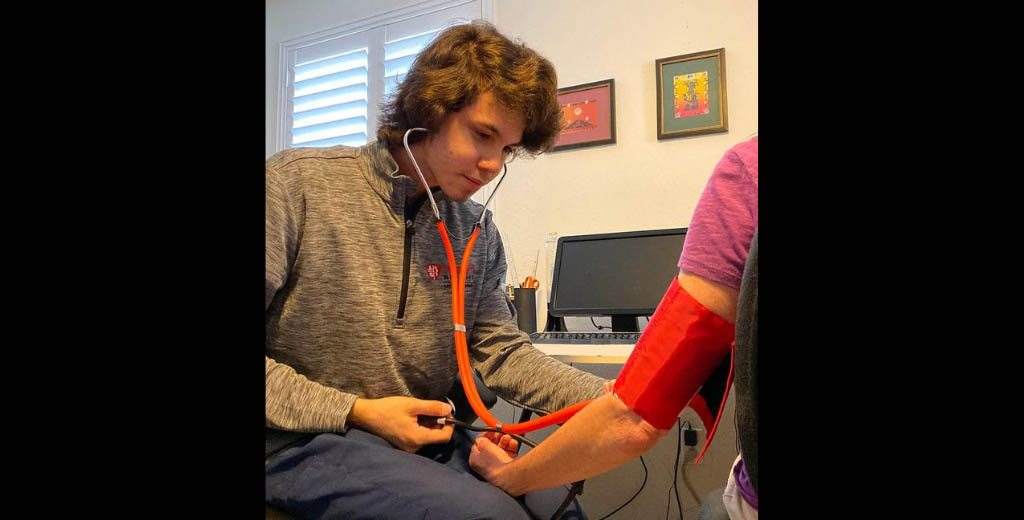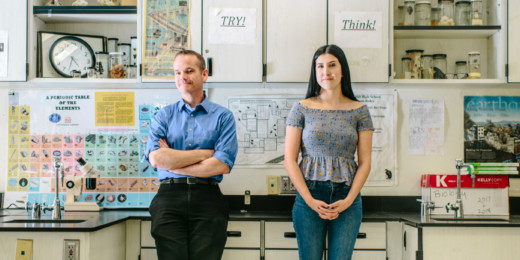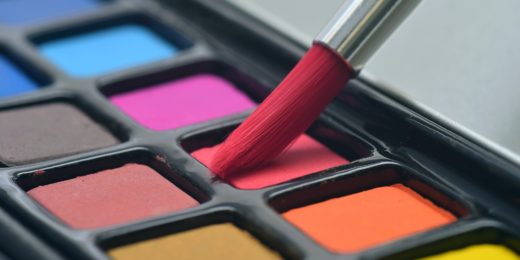In early July, a package arrived at the family home of Caitlin Dinh in Fallbrook, California. Inside were a vacuum-sealed sheep brain and pig heart, a suturing kit, a blood pressure cuff and a stethoscope.
Dinh had received the package so she could participate in Stanford Medicine's Clinical Summer Internship program. As instructors watched via Zoom, she applied the blood pressure cuff and stethoscope on her mom (vitals all normal!), and she dissected the heart and brain. She also practiced suturing a fresh pig's foot she bought at a butcher shop.
When Dinh, a rising junior at the University of Southern California, had registered for the program in January, she expected to spend two weeks on the Stanford campus with other undergraduate and high school students, attending lectures and learning clinical skills. Disappointed but not surprised when COVID-19 forced the program online, Dinh said she nevertheless "really enjoyed the course."
"I learned more about medicine in two weeks than I did in two years of college," she said.
Shifting learning online
Stanford Medicine offers about 20 programs for high school and undergraduate students every summer; they focus on various aspects of medicine, such as anesthesia, research and public health. While the pandemic caused the cancellation of some courses that required in-person learning, others shifted online.
One course went a step further: The Clinical Anatomy Summer Program moved into virtual reality. In addition to sending suturing tools, Stanford Medicine staff shipped VR kits to the high schoolers enrolled in the two-week course.
Wearing headsets, the students "met" in a virtual reality anatomy lab where their avatars could explore three-dimensional models of hearts, lungs and other organs. They "held" the organs, rotated them around, even poked their heads inside for a look at the inner workings.
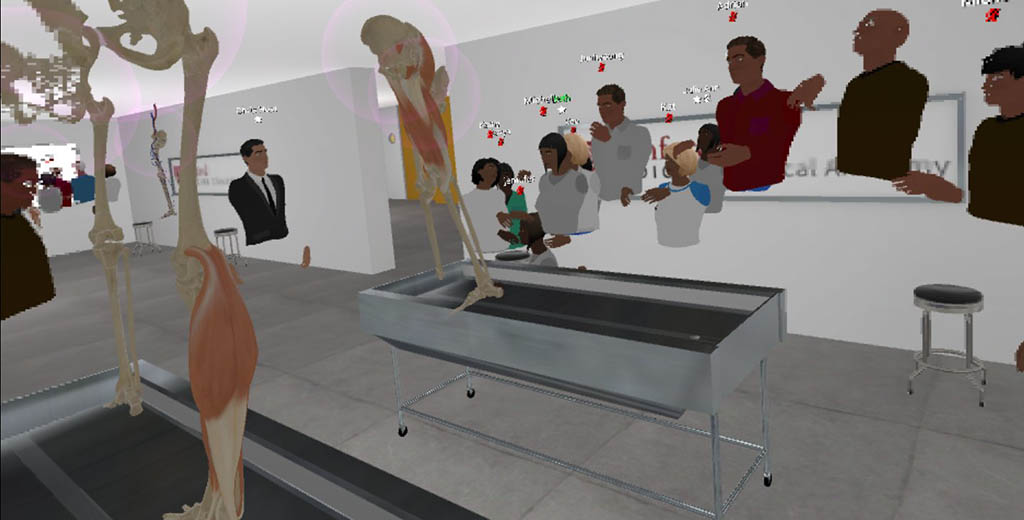
Sakti Srivastava, MD, professor of anatomy, said that when shelter-in-place orders happened, he knew his department couldn't offer the program in person. But he and others had been developing a VR course for medical students studying in low-resource countries, and they wondered if it might work for the high schoolers.
"We scratched our heads and said, 'We've been doing this other VR work. Can we put something together on short notice?'" Srivastava said.
They reorganized the course, offering two one-week sessions of online lectures interspersed with VR visits to the anatomy lab. "The great majority of students liked it and said they learned a lot," Srivastava said.
Fielding questions
Another course, Explore, a lecture series on biomedical research for high school students, became a webinar. In years past, students commuted to the Stanford campus for three hours of lectures and discussions; this summer, they tuned in every weekday morning for a month, learning about bioengineering, cancer, neuroscience and many other aspects of a career in research.
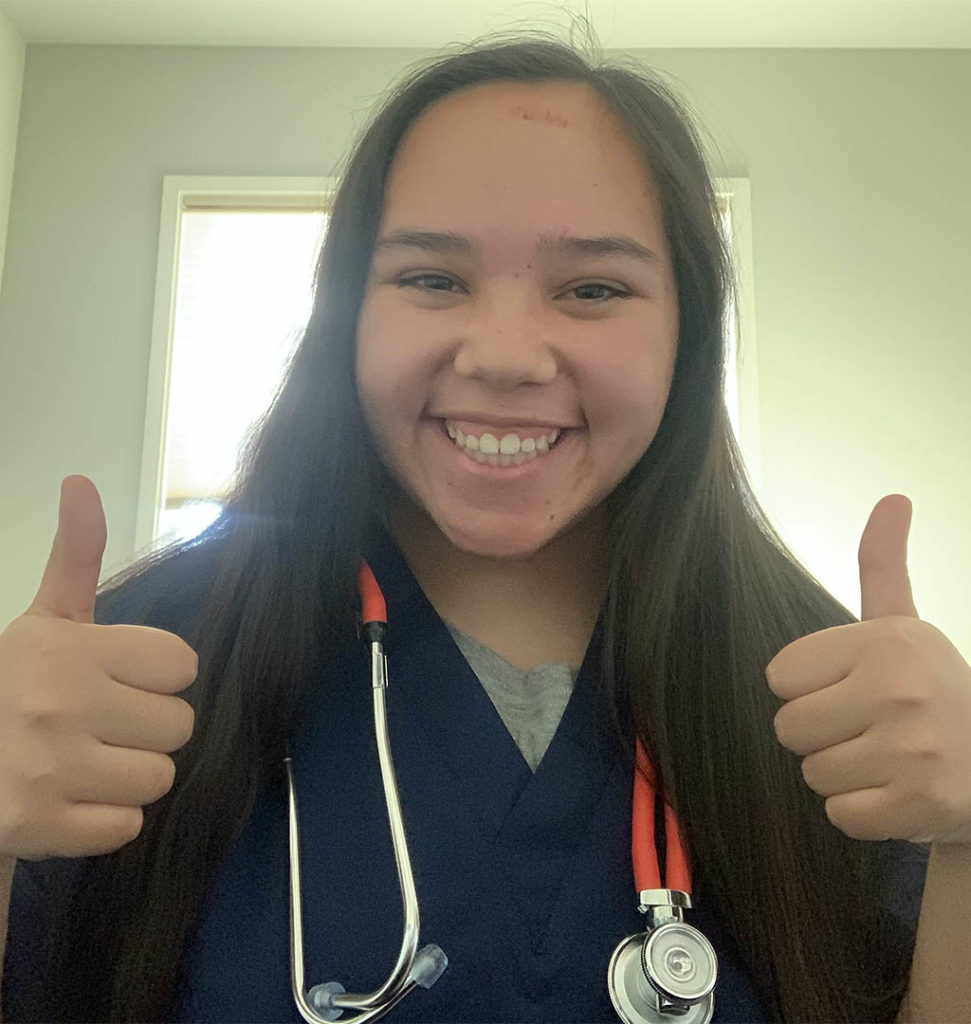
With 154 students, a webinar was the only viable option, said Cindy Limb, managing director of the program. Though the high schoolers were muted, they were able to type in questions and receive answers in real time.
"They constantly submitted questions," Limb said. "They were really engaged in the topics."
The directors of the Clinical Summer Internship also found the multitude of questions to be one of the upsides of virtual classes: Students who are normally shy about raising a hand in a class often have no trouble typing in a question during an online session, they said. Another benefit was that they could magnify a video of an instructor showing a dissection.
"The students were great, really adaptable and flexible," said Sarita Khemani, MD, a clinical associate professor of medicine and co-director of the internship. "They were so eager to learn, they made it work."
Photo of Maximilian Floridia, a rising high school senior from Redlands, California, taking his mom's blood pressure and photo of Kayla Stephens courtesy of Stanford Medicine's Summer Clinical Internship program. Image of Stanford Medicine's Clinical Anatomy Summer Program's virtual lab by technology consultant Matt Hasel.


